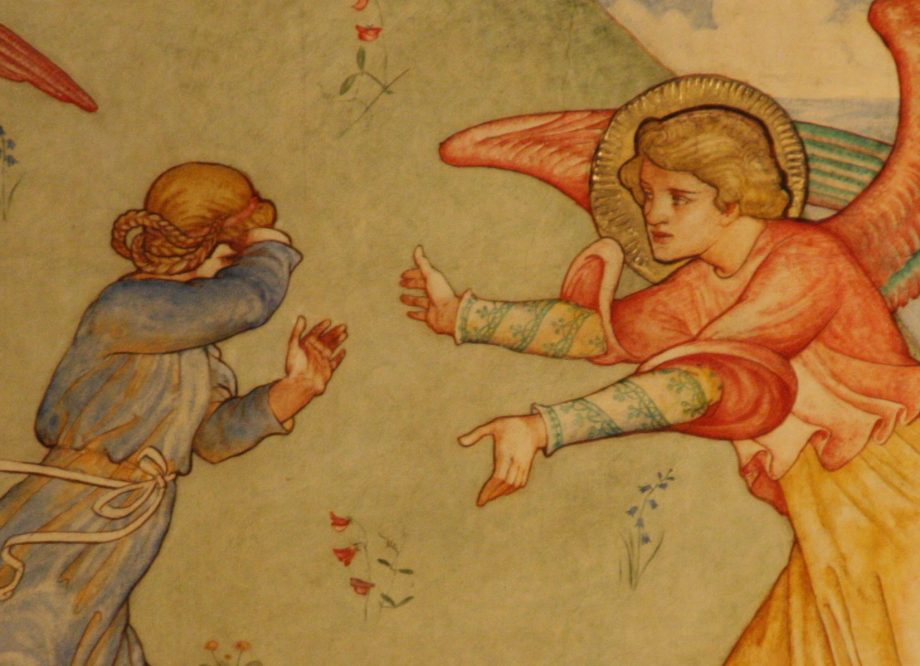Another visit to my beloved Mansfield Traquair Centre this evening. 17 years on and it still takes my breath away. To have the responsibility and the stewardship of a place like this a privilege.
This evening was the Friends AGM. Formal business was blessedly succinct. A conversation between Susy Kirk and Dr Elizabeth Cumming was delightful.
Chatting afterwards I confessed to a slight girl-crush at the moment for Dr Bendor Grosvenor.
Here's our letter to @thetimes calling for abolition of UK museum image reproduction fees. https://t.co/3uXJZbgWYd pic.twitter.com/RmkPDO4RQP
— Dr Bendor Grosvenor (@arthistorynews) November 6, 2017
What’s not to like about fighting for open access to the nation’s cultural heritage? The Chairman of our Board of Trustees (Dr Duncan Thomson) clearly agrees as he was one of the signatories to this letter in The Times.
This is a subject close to my own heart, and to friends in the room with me this evening. I’ve written about the Royal Hospital for Sick Children Mortuary Chapel murals before.* Many of us this evening remain concerned and worried for their future.
Fundamentally though, how do you raise awareness of the murals uncertain future when so few people know about them now?
One of the problems with public awareness is the location of the murals. They have remained largely inaccessible for over 100 years as they form an integral part of an incredibly intimate, private, and moving place. A mortuary chapel in a children’s hospital.
The most obvious way of making such a space more accessible, without being intrusive, is to make good quality images available online under open licenses. Until recently the only images that existed either belong to NHS Lothian (all rights reserved – mostly 35mm slides), or to Historic Environment Scotland (crown copyright – majority of images listed in Canmore date from 1982 and are not available online even to view).
I’m pleased to say that’s not the case any more. There are now 62 high quality images** of the murals, all available on Wikimedia Commons for immediate use under a CC-BY 4.0 license. Since initial upload they have already had their categorisation data enhanced and been linked up to Phoebe Traquair’s Wikidata profile by a keen editor (not me!).
I can already see the images appearing in Google image searches, and we know from other experiences that Wikimedia Commons is proving rich pickings for press articles.
My next steps are to complete the Wikipedia article I have been writing about the murals. Once that has been published the Google secret sauce will push it very swiftly to the top of the page rankings and the murals and their story will slowly start to become more open to all.
“What can be done, here and there, with moderate means and ordinary folk with such labour as they can spare […] open space amid the slums ” (Patrick Geddes)
* It’s worth briefly saying why these murals in particular are important and why they merit their Category A listing. They are the first mural scheme by Phoebe Anna Traquair. Traquair was a key figure in the Arts and Crafts movement in Scotland. She worked as an embroiderer, enamellist, book binder, illustrator and painter. She was the first important professional female artist in Scotland, and in recognition of this was the first female honorary member of the Royal Scottish Academy. The murals are also the product of a commission by the Edinburgh Social Union, founded by Patrick Geddes. They are the sole survivor of around 20 commissions instigated by the ESU. In 1899 in a published interview, Traquair herself considered them to be her finest work.
** Honourable mention for several ladies is required here. Dr Sally Ann Huxtable of the National Museums of Scotland who recommended the superb Diane Holdsworth’s photographic skills; Diane for doing the work pro-bono; and Sorrel Cossens of NHS Lothian for facilitating access. As with Phoebe herself, women of determination can achieve great things.
(By Ammienoot (Own work) [CC BY-SA 4.0 (https://creativecommons.org/licenses/by-sa/4.0)], via Wikimedia Commons)
